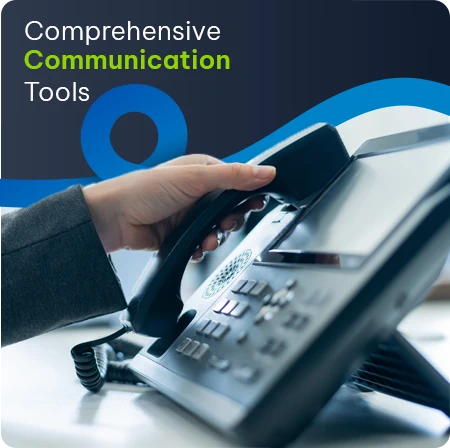So there you are, heading back to work in the morning traffic.
Life (perhaps via a Company Policy, or otherwise loadshedding?) has made the decision for you – working from home is over, and it’s now back to the office, like it or not.
Which is making you wonder whether you really need that fast Fibre to the Home (FTTH) now, after all.
As you dodge those special drivers who mistakenly believe that they own the road, your thoughts turn back to those pleasant days of WFH for almost everyone, when the main part of the daily commute to your desk involved just a short walk, and perhaps a change out of your night clothes (optional for some).
Then, of course, fast Fibre was as necessary for our collective well-being in the home as access to water and electricity. It was also – when boosted by an uninterruptible power supply (UPS) – arguably more reliable.
So this begs the question: if you’re back in the office for most or all of the working week, do you still need that amazing Fibre to the Home? Is fast FTTH still relevant in a non-WFH world?
After wading through the acronyms, the answer should surely be an emphatic ‘Yes, it is!’
Why Fibre Comes First
As a company, Vox supports the upliftment of South Africans at both the Macro-Economic level as well as for individuals.
Economic growth depends on reliable and high-speed digital infrastructure – as a country, we need to work towards a digital future for everyone. Fibre lines use light, not electricity, to transfer data, offering significantly higher bandwidth speeds and capacity – the amount of information that your internet connection can handle at a given time – when compared to other internet solutions. (Short science lesson: this is because nothing yet discovered is as fast as the speed of light, which is quite literally what your data is being carried on.)
Currently, too many South Africans still have to rely on mobile data for their home internet communications, or even on copper-based ADSL lines. Neither of these internet options is steadily reliable, and they don’t offer the same high-speed connection as Fibre.
ADSL’s copper wires are unfortunately stolen regularly and, even when left undisturbed, have both a limited capacity and lifespan – not to mention that they are also susceptible to lightning strikes. Not unsurprisingly, and following in other global footsteps, ADSL is being phased out in South Africa and replaced with more modern technology wherever the opportunity arises.
Mobile data also does not offer South Africans the digital future we all deserve. With regular power outages and load-shedding, network towers can’t provide a stable connection. Fibre towers, on the other hand, often operate on solar energy, and users can back up their Fibre routers with UPS systems.
Despite all these advantages presented by Fibre, some people might feel that, if they are no longer working from home, they could downgrade their Fibre line speed to save some money. Below, we’ll unpack why you might want to think twice about this option.
Taking It Personally
Let’s look at how fast Fibre to the Home benefits you and your family members – even when you’re at work.
FTTH on your property is able to do the following:
• Improve security: Beyond enabling a more digital-friendly lifestyle, Fibre contributes to good security such as channelling CCTV feeds through always-on internet access. Fibre-optic networks also offer improved security compared to traditional copper cable networks – they are difficult to tap into or intercept, making them a secure choice for transmitting sensitive data. (In comparison, copper cables are vulnerable to physical tampering, as they can be easily accessed and spliced into, leaving them open to data interception and manipulation.)
• Provide entertainment: In the old days we would channel-hop. Today, the streaming options just keep on coming for those who like their entertainment in passive format. Stream shows and download movies faster, and enjoy your current-favourite shows with less buffering, or better yet none at all.
• Gamers unite: Download and play games faster – gamers need the highest speed internet with minimal lag. Fibre has lower latency – the millisecond delay when data travels from your device to the game hosting server – and it should be low to prevent in-game lagging.
• Facilitate studies: You might be at work in the afternoons again, but the chances are that your children will be at home (at least the older ones). Being able to use the internet for their homework and to research projects is critical. Give them the benefit of proper Fibre speeds and enable them to finish their projects faster and better, whether they’re at school or tertiary level. It’s all about enabling their future.
• Futureproofing your home: And speaking of the future – connecting your home to high-speed Fibre will ensure your household’s digital activities can continue at future speeds without replacing the cabling in a few years’ time, because a Fibre network, once installed, does not require an imminent future change. Because the fibre-optic cabling infrastructure has unlimited bandwidth and can cover long distances, it will be able to handle future technological inventions. (Some of them, actually, like smart fridges, smart sensors and other appliances connected to the Internet of Things (IoT) are already here – but that’s a different story.)
Going Home
So there you are. The working day is over and you’re back in traffic, now on the evening run and driving home.
You have the satisfaction of knowing that your house – and most importantly, your family – is secured by a good security system channelled by CCTV feeds.
Your older kids are busy with their educational projects before putting away their homework and enjoying some well-deserved YouTube or gaming moments.
And for the adults, there is the latest streaming programme to look forward to as you prepare to wind down the day.
Before that, you might do a spot of quick banking, messaging or online shopping using your phone apps – with the emphasis being on quick, because it’s all enabled by super-fast Fibre to the Home.
And it makes your home just that bit more comfortable – and secure – all round than if you’d decided to downgrade to a slower Fibre package.
So yes. In a non-WFH world, super-fast FTTH is definitely still relevant.












